Rheem RHE40SP, RHE50P User Manual
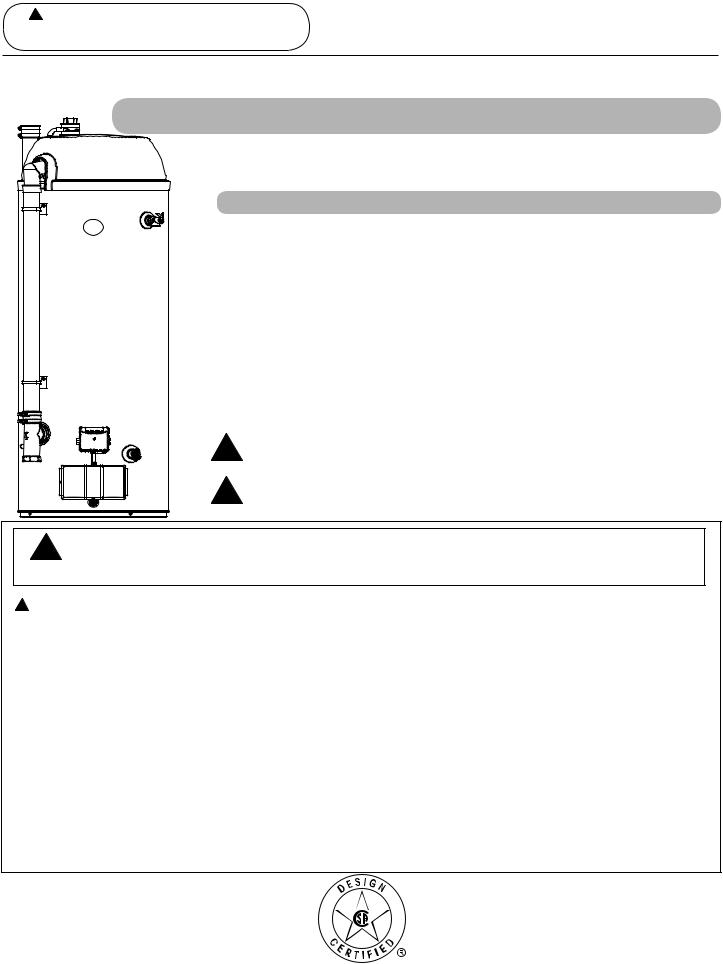
! Warning: This water heater is not suitable for use in manufactured (mobile) homes!
Use & Care Manual
With Installation Instructions for the Installer
Residential Gas - FVIR Certified
High Efficiency Condensing Power Direct Vent
Water Heaters
Residential 38 and 48 Gallon
The purpose of this manual is twofold: one, to provide the installer with the basic directions and recommendations for the proper installation and adjustment of the water heater; and two, for the owner–operator, to explain the features, operation, safety precautions, maintenance and troubleshooting of the water heater. This manual also includes a parts list.
It is very important that all persons who are expected to install, operate or adjust this water heater read the instructions carefully so they may understand how to perform these operations. If you do not understand these instructions or any terms within it, seek professional assistance.
Any questions regarding the operation, maintenance, service or warranty of this water heater should be directed to the seller from whom it was purchased. If additional information is required, refer to the section on “If you need service.”
Do not destroy this manual. Please read carefully and keep in a safe place for future reference.
! Recognize this symbol as an indication of Important Safety Information!
! California Proposition 65 Warning: This product contains chemicals known to the State of California to cause cancer, birth defects or other reproductive harm.
! WARNING: If the information in these instructions is not followed exactly, a fire or explosion may result causing property damage, personal injury or death.
! FOR YOUR SAFETY!
—Do not store or use gasoline or other flammable vapors or liquids or other combustible materials in the vicinity of this or any other appliance. To do so may result in an explosion or fire.
—WHAT TO DO IF YOU SMELL GAS
●Do not try to light any appliance.
●Do not touch any electrical switch; do not use any phone in your building.
●Immediately call your gas supplier from a neighbor’s phone. Follow the gas supplier’s instructions.
●If you cannot reach your gas supplier, call the fire department.
●Do not return to your home until authorized by the gas supplier or fire department.
—Improper installation, adjustment, alteration, service or maintenance can cause property damage, personal injury, or death. Refer to this manual. Installation and service must be performed by a qualified installer, service agency or the gas supplier.
AP15411-1 (10/12)
Printed in USA
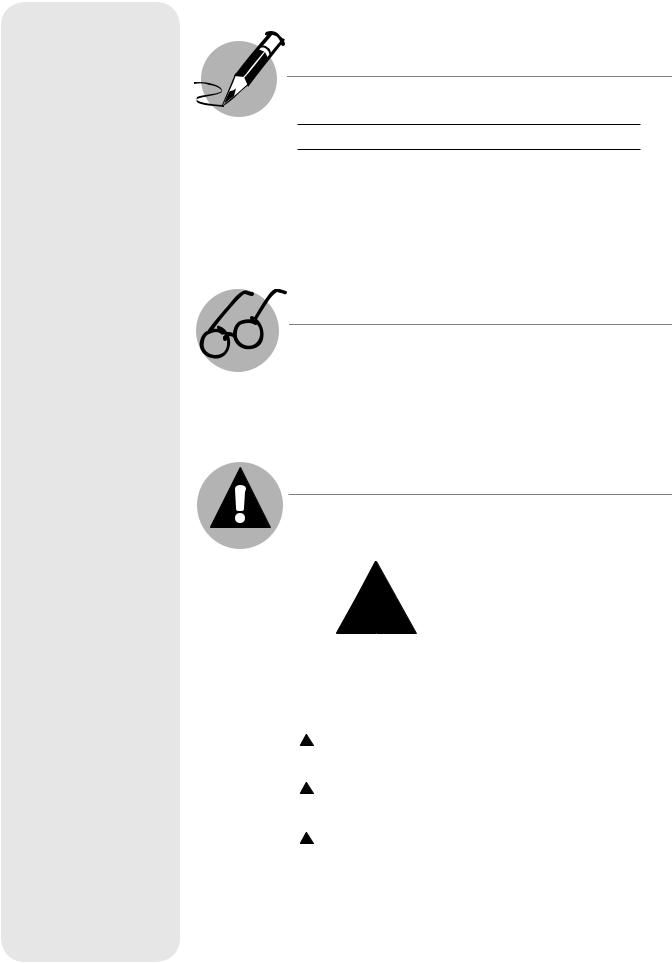
Safety Information
Safety Precautions.. . . 3–6
LP Gas Models . . . . . 5
Installation Instructions
Location. . . . . . . . 7
Water Supply
Connections . . . . . . . 9
Condensate
Management. . . . . . 10
Gas Supply. . . . . . . .11
Vent and Combustion
Air Inlet . . . . . . . 12-20
Wiring Diagram. . . . . 21
Pipe Insulation. . . . . 22,23
Heat Traps . . . . . . . .23
Installation Checklist . . . 25
Potable/Space Heating. . 26
Operating Instructions
Lighting Instructions . . . 27
Water Temperature. 28, 29
Care and Cleaning
Draining . . . . . . . . 31
Maintenance.. . . . . . 31
Burner Inspection. . . . 32
Vent System Inspection. . 32
Extended Shut-Down. . . 32
Troubleshooting Tips
Before You Call
For Service. . . . . . 33, 34
Gas Control LED Error
Codes. . . . . . . . . . 35
Customer Service
Parts List . . . . . . . |
36 |
Alternate Vent Termination |
|
Instructions . . . . . |
37, 38 |
If You Need Service.. |
. . 40 |
FOR YOUR RECORDS
Write the model and serial numbers here:
#
#
You can find them on a label on the appliance.
Staple sales slip or cancelled check here.
Proof of the original purchase date is needed to obtain service under the warranty.
READ THIS MANUAL
Inside you will find many helpful hints on how to use and maintain your water heater properly. A little preventive care on your part can save you time and money over the life of your water heater.
You’ll find many answers to common problems in the Troubleshooting Guide. If you review the chart of Troubleshooting Tips first, you may not need to call for service.
READ THE SAFETY INFORMATION
Your safety and the safety of others are very important. There are many important safety messages in this manual and on your appliance. Always read and obey all safety messages.
This is the safety alert symbol. Recognize ! this symbol as an indication of Important
Safety Information!
This symbol alerts you to potential hazards that can kill or hurt you and others.
All safety messages will follow the safety alert symbol and either the word “DANGER”, “WARNING”, “CAUTION” or “NOTICE”.
These words mean:
! DANGER: An imminently hazardous situation that will result in death or serious
injury.
! WARNING: A potentially hazardous situation that could result in death or serious injury
and/or damage to property.
! CAUTION: A potentially hazardous situation that may result in minor or moderate
injury.
Notice: Attention is called to observe a specified procedure or maintain a specific condition.
2
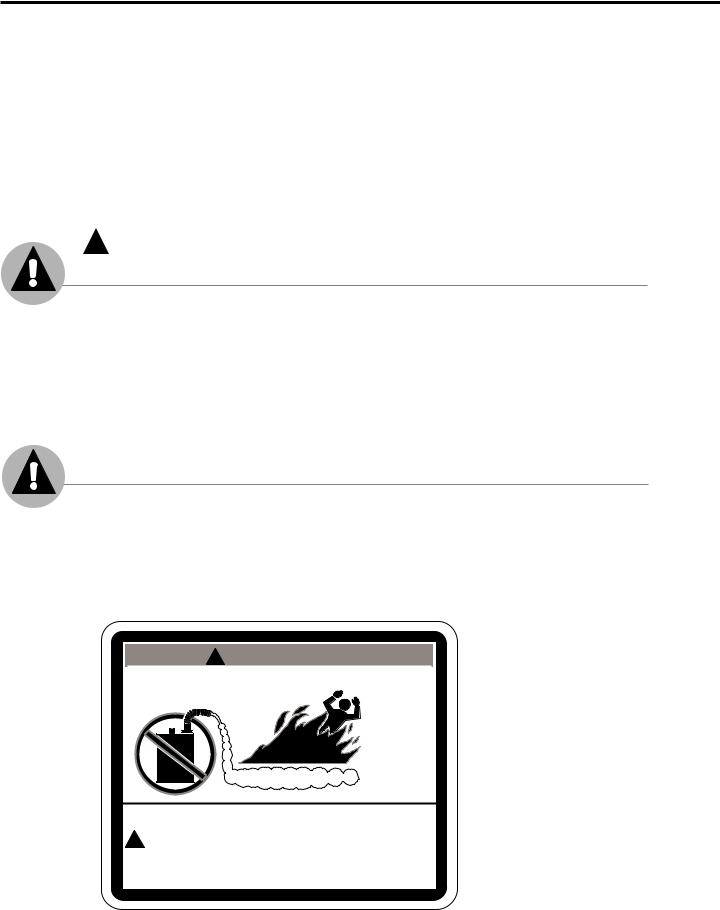
IMPORTANT SAFETY INFORMATION READ ALL INSTRUCTIONS BEFORE USING
Be sure to read and understand the entire Use and Care Manual before attempting to install or operate this water heater. It may save you time and money. Pay particular attention to the Safety Instructions. Failure to follow these warnings could result in serious bodily injury or death. Should you have problems understanding the instructions in this manual, or have any questions, STOP, and get help from a qualified service technician, or the local gas utility.
NOTICE: This water heater is equipped with a flammable vapor sensor that will automatically shut down the water heater in the presence of gasoline vapors and some other flammable vapors. If the flammable vapor sensor shuts down the water heater, contact a qualified service technician. Clear any hazardous materials and ventilate the area around the water heater. Do not turn off the appliance
or adjust the ON/OFF switch in any way. Do not tamper with the flammable vapor sensor. Do not submerse the flammable vapor sensor in water. Do not allow the flammable vapor sensor to come into contact with any substances such as bleach or cleaners. See the “Gas Control LED Error Codes” Section of this manual for a list of error codes.
 DANGER!
DANGER!
properly vent the water heater
Failure to properly vent the water heater as outlined in the Vent and Combustion Air-
Inlet Section of the Installation Instructions in this manual can result in unsafe operation of the water heater. To avoid the risk of fire, explosion, or asphyxiation from carbon monoxide, never operate this water heater unless both the vent and combustion air-inlet systems are properly installed. Be sure to inspect both the vent and the combustion airinlet for proper installation at initial start-up; and at least periodically thereafter. Refer to the Care and Cleaning section of this manual for more information regarding vent and combustion air-inlet system inspection.
 WARNING!
WARNING!
Gasoline, as well as other flammable materials and liquids (which include but are not limited to adhesives, solvents, paint thinners etc.), and the vapors they produce are extremely dangerous. DO NOT handle, use or store gasoline or other flammable or combustible materials anywhere near or in the vicinity of a water heater or any other appliance. Be sure to read and follow warning label pictured below and other labels on the water heater, as well as the warnings printed in this manual. Failure to do so can result in property damage, bodily injury or death.
! W A R N I N G
FlammableVapors
FIRE AND EXPLOSION HAZARD
Can result in serious injury or death.
! Do not store or use gasoline or other flammable vapors and liquids in the vicinity of this or any other appliance. Storage of or use of gasoline
or other flammable vapors or liquids in the vicinity of this or any other appliance can result in serious injury or death.
3
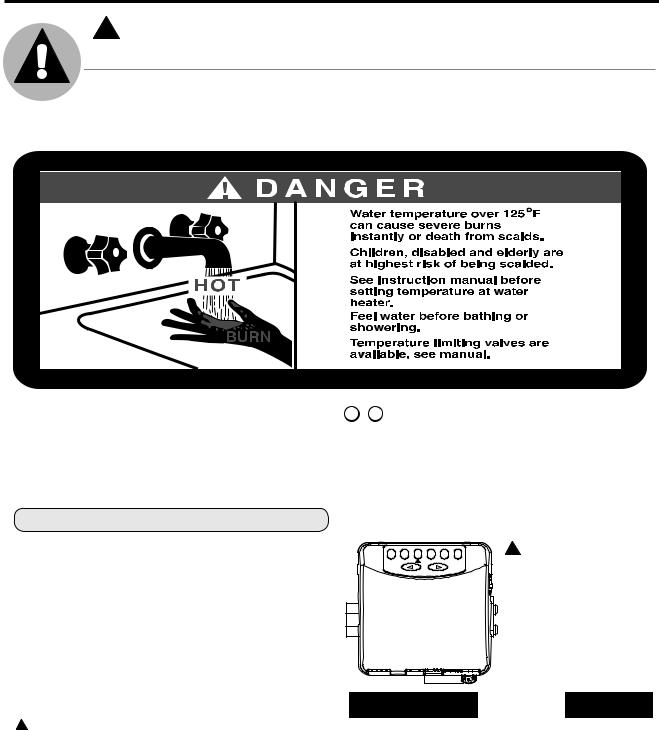
IMPORTANT SAFETY INFORMATION READ ALL INSTRUCTIONS BEFORE USING
! DANGER!
water temperature Setting
Safety and energy conservation are factors to be considered when selecting the water temperature setting of a water heater’s gas control (thermostat). Water temperatures above 125°F can cause severe burns or death from scalding. Be sure to read and follow the warnings outlined on the label pictured below. This label is also located on the water heater.
Notice: Mixing valves are available for reducing point of use water temperature by mixing hot and cold water in branch water lines. Contact a licensed plumber or the local plumbing authority for further information.
Time/Temperature Relationship in Scalds
Water Temperature |
Time To Produce a Serious Burn |
120°F |
More than 5 minutes |
125°F |
11/2 to 2 minutes |
130°F |
About 30 seconds |
135°F |
About 10 seconds |
140°F |
Less than 5 seconds |
145°F |
Less than 3 seconds |
150°F |
About 11/2 seconds |
155°F |
About 1 second |
Table courtesy of Shriners Burn Institute
The chart shown above may be used as a guide in determining the proper water temperature for your home.
! DANGER: Households with small children, disabled, or elderly persons may require a 120°F or lower gas control (thermostat) setting to prevent contact with “HOT” water.
Maximum water temperatures occur just after the burner has shut off. To find water temperature being delivered, turn on a hot water faucet and place
a thermometer in the water stream and read the thermometer. (See page 28 and 29 for more details.)
The temperature of the water in the heater can be regulated by pressing the "COOLER" or "HOTTER"

 arrow buttons on the front of the gas control (thermostat). To comply with safety regulations the gas control (thermostat) was set at its lowest
arrow buttons on the front of the gas control (thermostat). To comply with safety regulations the gas control (thermostat) was set at its lowest
setting before the water heater was shipped from the factory.
The illustration below shows the approximate water temperature for each LED Indicator on the Gas Control (Thermostat) Temperature Display.
|
WITH HOTTER WATER |
|
! DANGER: Hotter |
VAC |
C |
water increases the |
|
A B |
|
||
COOLER |
|
HOTTER |
potential for Hot Water |
SCALDING RISK INCREASES |
|||
|
|
|
SCALDS. |
Temperature Setting |
Display |
Burns on Adult Skin |
|
VAC ▲AB C |
|
VAC = approx. 70°F |
● ○ ○ ○ ○ ○ |
-------------------- |
|
||
• = approx. 110°F |
○ ● ○ ○ ○ ○ |
More than 5 minutes |
Both • and ▲ = approx. 115°F |
○ ● ● ○ ○ ○ |
More than 5 minutes |
▲= approx. 120°F |
○ ○ ● ○ ○ ○ |
More than 5 minutes |
Both ▲andA= approx. 125°F |
○ ○ ● ● ○ ○ |
1-1/2 to 2 minutes |
A = approx. 130°F |
○ ○ ○ ● ○ ○ |
About 30 seconds |
Both A and B = approx. 135°F |
○ ○ ○ ● ● ○ |
About 10 seconds |
B = approx. 140°F |
○ ○ ○ ○ ● ○ |
Less than 5 seconds |
Both B and C = approx. 145°F |
○ ○ ○ ○ ● ● |
Less than 3 seconds |
C = approx. 150°F |
○ ○ ○ ○ ○ ● |
About 1-1/2 seconds |
C-Flashing = approx. 160°F |
○ ○ ○ ○ ○ ● |
About 1/2 seconds |
4

 DANGER!
DANGER!
liquefied petroleum (LP Propane or butane) and Natural gas models
LP and Natural gas have an odorant added to aid in detecting a gas leak. Some people |
||||
may not physically be able to smell or recognize this odorant. If you are unsure or |
||||
unfamiliar with the smell of LP or natural gas, ask the gas supplier. Other conditions, |
||||
such as “odorant fade”, which causes the odorant to diminish in intensity, can also hide or |
||||
camouflage a gas leak. |
|
|
|
|
● Water heaters utilizing LP gas are |
! DANGER: If a gas leak is present or |
|||
different from natural gas models. A |
||||
suspected: |
||||
natural gas water heater will not function |
||||
|
Do not |
attempt to find the cause |
||
safely on LP gas and vice versa. |
● |
|||
● No attempt should ever be made to |
|
yourself. |
|
|
● Do not try to light any appliance. |
||||
convert the water heater from natural |
||||
gas to LP gas. To avoid possible |
● Do not touch any electrical switch. |
|||
equipment damage, personal injury or |
||||
● Do not use any phone in your building. |
||||
fire, do not connect the water heater to a |
||||
fuel type not in accordance with the unit |
● Leave the house immediately and make |
|||
data plate. LP for LP units. Natural gas |
||||
|
sure your family and pets leave also. |
|||
for natural gas units. These units are not |
|
|||
certified for any other fuel type. |
● Leave the doors open for ventilation |
|||
● LP appliances should not be installed |
|
and contact the gas supplier, a qualified |
||
|
service agency or the fire department. |
|||
below grade (for example, in a basement) |
|
|||
if such installation is prohibited by |
● Stay away from the house (or building) |
|||
federal, state and/or local laws, rules, |
|
until the service call has been made, the |
||
regulations or customs. |
|
leak is corrected and a qualified agency |
||
● LP gas must be used with great caution. |
|
has determined the area to be safe. |
||
It is heavier than air and will collect first |
|
|
|
|
in lower areas making it hard to detect at |
|
|
|
|
nose level. |
|
|
|
|
● Before attempting to light the water heater, make sure to look and smell for gas leaks. Use a soapy solution to check all gas fittings and connections. Bubbling at a connection indicates a leak that must be corrected. When smelling to detect a gas leak, be sure to sniff near the floor also.
● Gas detectors are recommended in LP
& natural gas applications and their installation should be in accordance with the detector manufacturer’s recommendations and/or local laws, rules, regulations or customs.
● It is recommended that more than one method, such as soapy solution, gas detectors, etc., be used to detect leaks in gas applications.
5
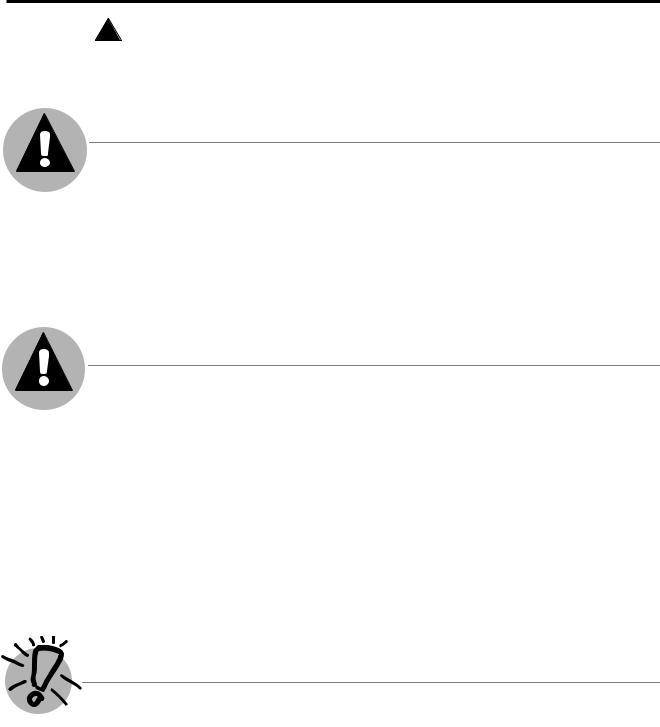
IMPORTANT SAFETY INFORMATION READ ALL INSTRUCTIONS BEFORE USING
! WARNING!
For your safety, the information in this manual must be followed to minimize the risk of fire or explosion, electric shock, or to prevent property damage, personal injury, or loss of life.
FOR INSTALLATIONS IN THE STATE OF CALIFORNIA
California Law requires that residential water heaters must be braced, anchored or strapped to resist falling or horizontal displacement due to earthquake motions. For residential water heaters up to 52-gallon capacity, a brochure with generic earthquake bracing instructions can be obtained from: Office of the State Architect, 1102 Q Street, Suite 5100, Sacramento, CA 95814 or you may call 916-445-8100 or ask a water heater dealer.
However, applicable local codes shall govern installation. For residential water heaters
of a capacity greater than 52 gallons, consult the local building jurisdiction for acceptable bracing procedures.
SAFETY PRECAUTIONS
Have the installer show you the location of the gas shut-off valve and how to shut it off if necessary. Turn off the manual shut-off valve if the water heater has been subjected to overheating, fire, flood, physical damage or if the gas supply fails to shut off.
●Read this manual entirely before installing or operating the water heater.
●Use this appliance only for its intended purpose as described in this Use and Care Manual.
●Be sure your appliance is properly installed in accordance with local codes and the provided installation instructions.
●DO NOT attempt to repair or replace any part of your water heater unless it is specifically recommended in this manual. All other servicing should be referred to a qualified technician.
Read and follow this Safety Information
 carefully.
carefully.
SAVE THESE INSTRUCTIONS
IMPORTANT
Carefully inspect the water heater for damage before proceeding with the installation.
If you find damage to the condensate trap, PVC pipes, gas control (thermostat) or the blower assembly, DO NOT install or attempt any repair to the water heater. Contact the manufacturer as detailed under "IF YOU NEED SERVICE" section of this manual.
6

Installing the water heater
This water heater must be installed in accordance with these instructions, local codes, utility company requirements, and/or in the absence of local codes, use the latest edition of the American National Standard/ National Fuel Gas Code. A copy can be purchased from either the American Gas Association, 400 N. Capitol Street NW, Washington, DC 20001 as ANSI standard Z223.1 or National Fire Protection Association, 1 Batterymarch Park, Quincy, MA 02269 as booklet NFPA 54.
Max. 2.75”
Flammable 
Vapor Sensor Diameter of
water heater
plus 2” min.
The auxiliary catch pan installation MUST conform to local codes.
Notice: DO NOT allow the catch pan to obstruct the flammable vapor sensor.
Notice: DO NOT allow the flammable vapor sensor to become submerged in water. Make sure the catch pan is properly drained.
! WARNING: Combustible construction refers to adjacent walls and ceilings and should not be confused with combustible or flammable products and materials. Combustible and/or flammable products and materials should never be stored in the vicinity of this or any gas appliance.
Location
The water heater should not be located in an area where leakage from the tank or connections will result in damage to the area adjacent to the heater or to lower floors of the structure.
When such areas cannot be avoided it is recommended that a suitable catch pan, adequately drained, must be installed under the water heater.
The water heater must be centered in the catch pan.
Catch pan kits are available from the store where the water heater was purchased, or any water heater distributor.
Make certain the floor underneath the water heater is strong enough to sufficiently support the weight of the water heater once it is filled with water.
A gas fired water heater or any other appliance should not be installed
in a space where liquids which give off flammable vapors are to be used or stored. Such liquids include gasoline, LP gas (butane or propane), paint or adhesives and their thinners, solvents or removers.
DO NOT obstruct or block the
Flammable Vapor Sensor.
Because of natural air movement in a room or other enclosed space, flammable vapors can be carried some distance from where liquids which give off flammable vapors are to be used or stored. The open flame of the water heater’s main burner can ignite these vapors and create a shut down condition of the water heater which will not allow the water heater to ignite until examined by a Qualified Service Technician.
FVIR certified gas water heaters can be installed on a residential garage floor without the use of an 18-inch stand in accordance with the National Fuel Gas Code, NFPA 54, ANSI Z223.1, unless otherwise directed by State and Local code requirements. The water heater must be located so it is not subject to physical damage, for example, by moving vehicles, area flooding, etc.
● Do not install the water heater in
a location where it may be subjected to ambient temperatures exceeding 125°F.
●The water heater should be installed so as to minimize the length of vent and combustion air-inlet pipe(s) and the number of vent and combination airinlet connection fittings required.
●Hot water lines should be insulated to conserve water and energy.
●The water heater should be installed close to a condensate drain.
●The water heater, condensate lines, and water lines should be protected from exposure to freezing temperatures.
●DO NOT install this water heater outdoors.
●Minimum clearance from combustible construction:
Front* |
Side |
Rear |
Top** |
|
|
|
|
0" |
0" |
0” |
12” |
|
|
|
|
*"Front" clearance dimension is measured from front of control to the closet door.
**"Top" clearance dimension is measured from the top pan of the water heater to the ceiling.
If the clearances stated on the Instruction/ Warning Label, located on the front of the heater differ, install the water heater according to the clearances stated on the label.
●If the water heater is installed in an alcove or closet, the entire floor must be covered by a wood or metal panel.
A minimum of 24” clearance from the front and top should be available for adequate inspection and servicing.
●The water heater may be installed on combustible floors, but not directly on carpeting. If the water heater must be installed on carpeting, place a metal or wood panel beneath the water heater, extending beyond its full width and depth at least 3” in all directions.
7

Installing the water heater
|
Corrosive Atmospheres |
NOTICE: The water heater |
The air in beauty shops, dry cleaning |
should not be installed near |
establishments, photo processing |
an air supply containing |
labs, and storage areas for liquid and |
halogenated hydrocarbons. |
powdered bleaches or swimming pool |
|
chemicals often contain such halogenated |
|
hydrocarbons. |
|
An air supply containing halogenated |
|
hydrocarbons may be safe to breathe, |
|
but when it passes through a gas flame |
|
corrosive elements are released that |
will shorten the life of any gas burning appliance.
Propellants from common spray cans or gas leaks from A/C and refrigeration equipment are highly corrosive after passing through a flame.
The water heater warranty is voided when failure of the water heater is due to operation in a corrosive atmosphere.
Thermal Expansion
Determine if a check valve exists in the inlet water line. Check with your local water utility company. It may have been installed in the cold water line as a separate back flow preventer, or it may be part of a pressure reducing valve, water meter or water softener. A check valve located in the cold water inlet line can cause what is referred to as a “closed water system”. A cold water inlet line with no check valve or back
flow prevention device is referred to as an “open” water system.
As water is heated, it expands in volume and creates an increase in the pressure within the water system. This action is referred to as “thermal expansion”. In an “open” water system, expanding water which exceeds the capacity of the water heater flows back into the city main where the pressure is easily dissipated.
A “closed water system”, however, prevents the expanding water from flowing back into the main supply line, and the result of “thermal expansion” can create a rapid and dangerous pressure increase in the water heater and system
piping. This rapid pressure increase can quickly reach the safety setting of the relief valve, causing it to operate during each heating cycle. Thermal expansion, and the resulting rapid, and repeated expansion and contraction of components in the water heater and piping system can cause premature failure of the relief valve, and possibly the heater itself. Replacing the relief valve will not correct the problem!
The suggested method of controlling thermal expansion is to install an expansion tank in the cold water line between the water heater and the check valve (see illustration on right). The expansion tank is designed with an
air cushion built in that compresses as the system pressure increases, thereby relieving the over pressure condition and eliminating the repeated operation of the relief valve. Other methods of controlling thermal expansion are also available. Contact your installing contractor, water supplier or plumbing inspector for additional information regarding this subject.
8
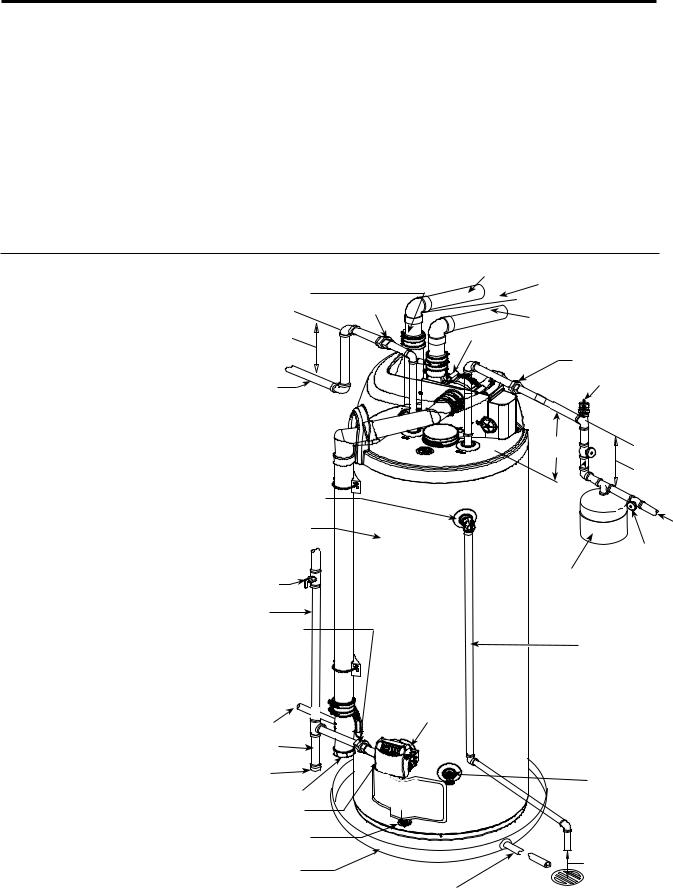
IMPORTANT: Do not apply heat to the HOT or COLD water connections. If sweat connections are used, sweat tubing to adapter before fitting adapter to the cold water connections on heater. Any heat applied to the cold water supply fittings will permanently damage the dip tube and heat traps.
Water Supply Connections
Refer to the illustration below for suggested typical installation. The installation of unions or flexible copper connectors is recommended on the hot and cold water connections so that the water heater may be easily disconnected for servicing if necessary. The HOT and COLD water connections are clearly marked and are 3/4” NPT on all models. Install a shut-off valve in the cold water line near the water heater.
IMPORTANT: It is recommended that the hot and cold water piping have a minimum vertical height of 10" from
the top of the water heater before the transition into any elbow. This vertical height is needed in order to provide adequate clearance for top cap installation and removal.
To gain access to the hot and cold water connections on water heater remove the two (2) screws that secure the top cap to the water heater then pull the top cap upward and off the water heater. See illustration of top cap and screws on pages 23 & 36.
NOTICE: The National Fuel Gas Code (NFGC) mandates a manual gas shut-off valve: See (NFGC) for complete
instructions. Local codes or plumbing authority requirements may vary from the instructions or diagrams provided and take precedent over these instructions.
Typical Installation |
Air inlet |
1/8” per foot minimum |
|
Air inlet connector |
|
|
slope upward for horizontal |
Union |
|
venting. |
|
Heat trap |
(Recommended) |
|
Vent |
6” minimum |
|
|
|
recommended |
|
Blower assembly |
|
|
|
||
|
|
|
Union |
|
|
|
(Recommended) |
Hot water outlet to |
|
|
Vacuum Relief Valve |
fixtures |
|
|
|
|
|
|
|
|
*10" min. |
|
|
|
Heat trap |
||
|
6” minimum |
||
|
recommended |
||
Temperature and pressure |
* Typical for |
|
|
both sides |
|
||
(T&P) relief valve |
|
||
|
|
||
Water Heater Jacket |
Shut-off |
To cold |
|
valve |
|||
|
water |
||
|
Shut-off |
supply |
|
|
valve |
|
|
Manual gas shut-off |
Thermal expansion |
|
|
tank (if required) |
|
||
To gas supply |
|
|
|
Ground joint union |
Relief valve discharge |
||
|
|||
|
line to suitable open |
||
|
drain. |
|
|
Condensate line |
On/Off |
|
|
switch |
|
||
to suitable drain |
|
|
|
Sediment |
|
trap |
|
Cap |
Drain |
Condensate Trap |
valve |
|
|
Gas Control (Thermostat) |
|
Flammable Vapor Sensor |
|
Auxiliary catch pan |
6” Air gap |
|
Drain Pan Pipe |
|
to suitable drain. |
9

Installing the water heater
A new combination temperature and pressure relief valve, complying with the Standard for Relief Valves and Automatic Gas Shut-Off Devices for Hot Water Supply Systems, ANSI Z21.22, is supplied and must remain in the opening provided and marked for the purpose on the water heater. No valve of any type should be installed between the relief valve and the tank. Local codes shall govern the installation of relief valves.
Relief Valve
The pressure rating of the relief valve must not exceed 150 PSI, the maximum working pressure of the water heater as marked on the rating plate.
The Btuh rating of the relief valve must equal or exceed the Btuh input of the water heater as marked on its rating plate.
Position the outlet of the relief valve above a suitable open drain to eliminate potential water damage. Piping used should be of a type approved for hot water
distribution.
The discharge line must be no smaller than the outlet of the valve and must pitch downward from the valve to allow complete drainage (by gravity) of the relief valve and discharge line.
The end of the discharge line should not be threaded or concealed and should be protected from freezing. No valve of any type, restriction, or reducer coupling should be installed in the discharge line.
 WARNING: The tank must be full of water before heater is turned on. The water heater warranty does not cover damage or failure resulting from operation with an empty or partially empty tank.
WARNING: The tank must be full of water before heater is turned on. The water heater warranty does not cover damage or failure resulting from operation with an empty or partially empty tank.
To Fill the Water Heater
Make certain that the drain valve is closed, then open the shut-off valve in the cold water supply line.
Open each hot water faucet slowly to allow the air to vent from the water heater and piping.
A steady flow of water from the hot water faucet(s) indicates a full water heater.
Do not allow the flammable vapor sensor to become submerged in water.
Condensate Trap
Condensate Riser
(1/2" PVC pipe supplied)
1/2" PVC tee (supplied)
Downward Slope
Drain Line
 6" air gap
6" air gap
Condensate Drain
NOTICE: If water appears on the floor DO NOT assume the tank in leaking, check venting and condensate line connections.
NOTICE: Water Heater should be leveled for proper condensate drainage.
Condensate Management
This water heater generates condensate and requires a drain to be located in close proximity to allow condensate to drain safely. The drain line and fittings should be installed per installation instructions.
Be sure the condensate runs freely to the drain and does not accumulate in the
condensate trap or the condensate line. In cold climates, precautions may need to be taken to ensure that the condensate drain lines do not freeze. A water proof heat tape may be used to prevent freezing of condensate lines.
It is recommended that the condensate trap be primed by filling the trap with 1/4 cup of tap water before connecting the drain lines.
•Condensate is mildly acidic and should be collected and disposed per local codes. Certain local codes require condensate
to be neutralized before it is disposed. Neutralizer kits are available. Contact your installer or plumbing contractor.
•Use only PVC, CPVC pipe or
flexible tubing suitable for use with flue condensate as drain line. If flexible tubing is used ensure that there are no bends or twists and has gradual slope to condensate drain.
•The drain line (along its entire length) must be at least the same diameter as the drain of the condensate trap (1/2”).
•The drain line must be short as possible and have a downward slope towards the condensate drain. If suitable slope is not provided, the drain line can get blocked and will cause improper operation of the water heater. If a downward slope cannot be provided, a condensate pump should be used to pump condensate to a suitable drain.
•The end of the drain line should be open to the atmosphere. The end should not be under water.
•Do not connect the drain line directly to the sewer drain.
•Do not connect the drain line with drains from other appliances.
•Do not drain condensate into the water heater drain pan.
•Do not drain condensate over public way, walkway or other areas where it will create slippery condition, which could lead to personal injury.
10
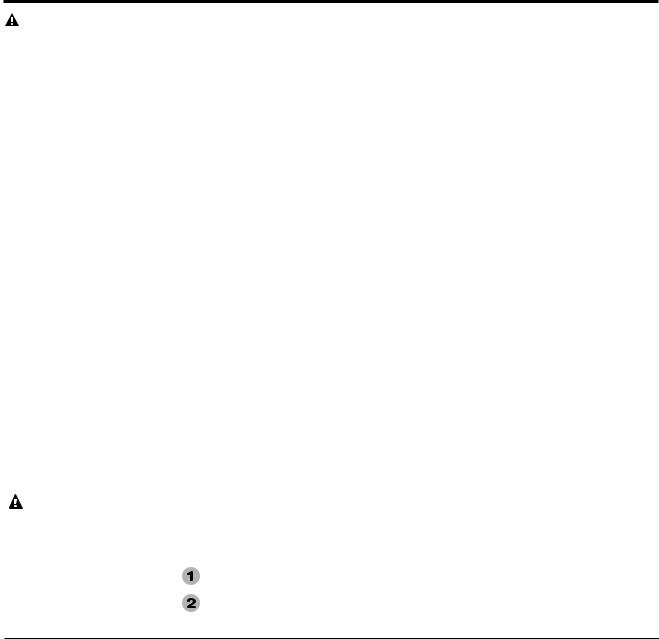
 WARNING: Do not attempt to convert this water heater for use with a different type of gas other than the type shown on the rating plate. Such conversion could result in hazardous operating conditions.
WARNING: Do not attempt to convert this water heater for use with a different type of gas other than the type shown on the rating plate. Such conversion could result in hazardous operating conditions.
Gas Supply
|
The branch gas supply line to the water |
the inlet of the appliance as practical at |
|
|
heater should be a clean 1/2” black |
the time the appliance installation. The |
|
|
steel pipe or other approved gas piping |
sediment trap shall be either a tee fitting |
|
|
material. |
with a capped nipple in the bottom outlet |
|
|
A ground joint union or ANSI design |
or other device recognized as an effective |
|
|
sediment trap. |
||
|
certified semi-rigid or flexible gas |
||
|
|
||
|
appliance connector should be installed |
Do not use excessive force (over 31.5 ft |
|
|
in the gas line close to the water heater. |
lbs.) in tightening the pipe joint at the gas |
|
|
The National Fuel Gas Code (NFGC) |
control (thermostat) inlet, particularly if |
|
|
mandates a manual gas shut-off valve: See |
teflon pipe compound is used, as the valve |
|
|
(NFGC) for complete instructions. |
body may be damaged. |
|
|
If flexible connectors are used, the |
The minimum inlet gas pressure (with |
|
|
maximum length shall not exceed 36” |
main burner on) to the water heater must |
|
|
and must meet the requirements in ANSI |
be a minimum of 5” w.c. for natural |
|
|
Z21.24-Connectors for Gas Appliances. |
gas, and a minimum of 11” w.c. for LP |
|
|
If lever type gas shut-offs are used, |
gas. The maximum inlet pressure to the |
|
|
water heater must not exceed 14" w.c. for |
||
|
they shall be T-Handle type. |
||
|
natural gas and LP gas. For purposes of |
||
|
Compound used on the threaded joints of |
||
|
input adjustment, the minimum inlet gas |
||
|
the gas piping must be of the type resistant |
pressure (with main burner on) is shown |
|
|
to the action of LP gas. Use compound |
on the water heater rating plate. If high or |
|
|
sparingly on male threads only. |
low gas pressures are present, contact your |
|
|
Where a sediment trap is not incorporated |
gas supplier for correction. |
|
|
as part of the appliance, a sediment |
|
|
|
trap shall be installed downstream of |
|
|
|
the equipment shutoff valve as close to |
|
|
|
|
|
|
WARNING: Never use |
Leak Testing |
|
|
an open flame to test for |
The water heater and its gas connections |
Bubbles indicate a gas leak that must |
|
gas leaks, as property |
must be leak tested at normal operating |
be corrected. |
|
damage, personal injury, or |
pressures before it is placed in operation. |
The factory connections to the gas |
|
death could result. |
|||
Turn on the manual gas shut-off |
|||
|
control (thermostat) should also be leak |
||
|
valve near the water heater. |
tested after the water heater is placed in |
|
|
Use a soapy water solution to test for |
operation. |
|
|
leaks at all connections and fittings. |
|
Pressure Testing the Gas Supply System
The water heater and its manual gas shut-off valve must be disconnected from the gas supply piping system during any pressure testing of that system at pressures in excess of 1/2 psi (14” w.c.).
The water heater must be isolated from the gas piping system by closing the manual gas shut-off valve during any pressure testing of the gas supply piping at pressures equal to or less than
1/2 psi (14” w.c.).
11
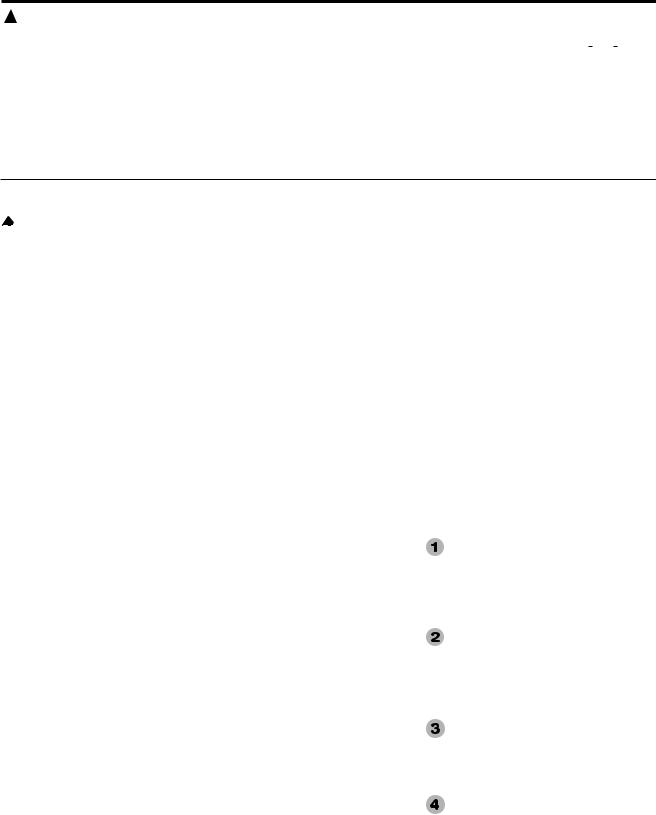
Installing the water heater
 WARNING: Failure to install a water heater suitable for the altitude at the location it is intended to serve, can result in improper operation of the appliance resulting in property damage and/or producing carbon monoxide gas, which could result in personal injury, or death.
WARNING: Failure to install a water heater suitable for the altitude at the location it is intended to serve, can result in improper operation of the appliance resulting in property damage and/or producing carbon monoxide gas, which could result in personal injury, or death.
High Altitude
Input rating of this water heater is |
For installation between 6,000 and 8,999 |
|
based on sea level operation. At higher |
feet, refer to the Venting Information |
|
elevations the actual input rate may be |
tables on page 13 for maximum vent |
|
lower than the value listed on the rating |
lengths. |
|
label due to the derating of natural gas and |
Installations above 8,999 feet are not |
|
LP gas. This water heater can be installed |
||
authorized. |
||
at elevations up to 5,999 feet without any |
||
Contact the local gas supplier for more |
||
change or modification. |
||
|
information. |
! DANGER: To avoid the risk of fire, explosion, or asphyxiation from carbon monoxide, NEVER operate the water heater unless it is properly vented and the
Vent and Combustion Air
Inlet systems are properly installed as detailed in the
"Vent and Combustion
Air Inlet" section of this manual.
The vent pipe must overlap a minimum of ½” on each connection. It is important that the vent pipe engages fully into any pipe fitting and be kept in that position until the adhesive has fully cured. DO NOT drill or punch holes in the vent or combustion air inlet pipe or fittings.
NOTICE: This unit is equipped with a Flammable
Vapor Sensor. Do not apply power until enough time has passed to allow the vapors from the primer and cement to dissipate.
Additional installation information for The Commonwealth of Massachusetts is located on the back page of this manual.
Vent and Combustion Air Inlet
This water heater is a direct vent appliance and must be installed so that all air for combustion is derived directly from the outside atmosphere and all flue gases are discharged to the outside atmosphere.
For proper installation of the vent and combustion air-inlet systems, follow the instructions as detailed in this manual.
DO NOT connect this water heater to an existing vent or chimney - it must be vented separately from all other appliances.
NOTICE: This water heater is approved to use the following materials for vent and combustion air-inlet systems:
PVC (Schedule 40, Cellular Core, ASTM-F891)
PVC (DWV, ASTM-D2665)
PVC (Schedule 40, ASTM-D1785) PVC (SDR Series, ASTM-D2241) CPVC (CPVC 4120, ASTM-D2846) CPVC (Schedule 40, ASTM-F441) CPVC (SDR Series, ASTM-F442)
ABS (Schedule 40, DWV, ASTM-D2661)
ABS (Schedule 40, DWV, Cellular Core, ASTM-F628)
DO NOT mix ABS pipe and fittings with PVC or CPVC pipe fittings.
NotICe: It is acceptable to interchange PVC and CPVC pipe and fittings.
The unit may be vented horizontally through a wall or vertically through the roof.
Vent and combustion air inlet pipe runs must be adequately supported along both vertical and horizontal lengths.
Maximum unsupported length is recommended to be no more than 4 feet.
It is imperative that the first hanger be located on the horizontal length immediately adjacent to the first
90-degree elbow from the vertical rise of vent pipe connected to the water heater.
The support method used should isolate the vent and combustion air inlet pipes from floor joists or other structural members to help prevent the transmission of noise and vibration.
Do not support, pin or otherwise secure the vent and combustion air inlet systems in a way that restricts the normal thermal expansion and contraction of the chosen vent material and air inlet pipe.
If the water heater is being installed as a replacement for an existing power vented water heater, a thorough inspection of the existing vent and combustion air inlet system must be performed prior to any installation work.
Verify that the correct materials as detailed above have been used, and that the minimum or maximum vent and combustion air inlet length and terminal locations as detailed in this manual have been met.
Carefully inspect the entire vent and combustion air inlet systems pipes for any signs of cracks or fractures, particularly at the joints between elbows or other fittings and the straight length of vent pipe.
Check the vent and combustion air inlet systems for signs of sagging or other stresses in the joints as a result of misalignment of any components in the systems.
If any of these conditions are found, they must be corrected in accordance with the instructions in this manual before completing the installation and putting the water heater into service.
12
